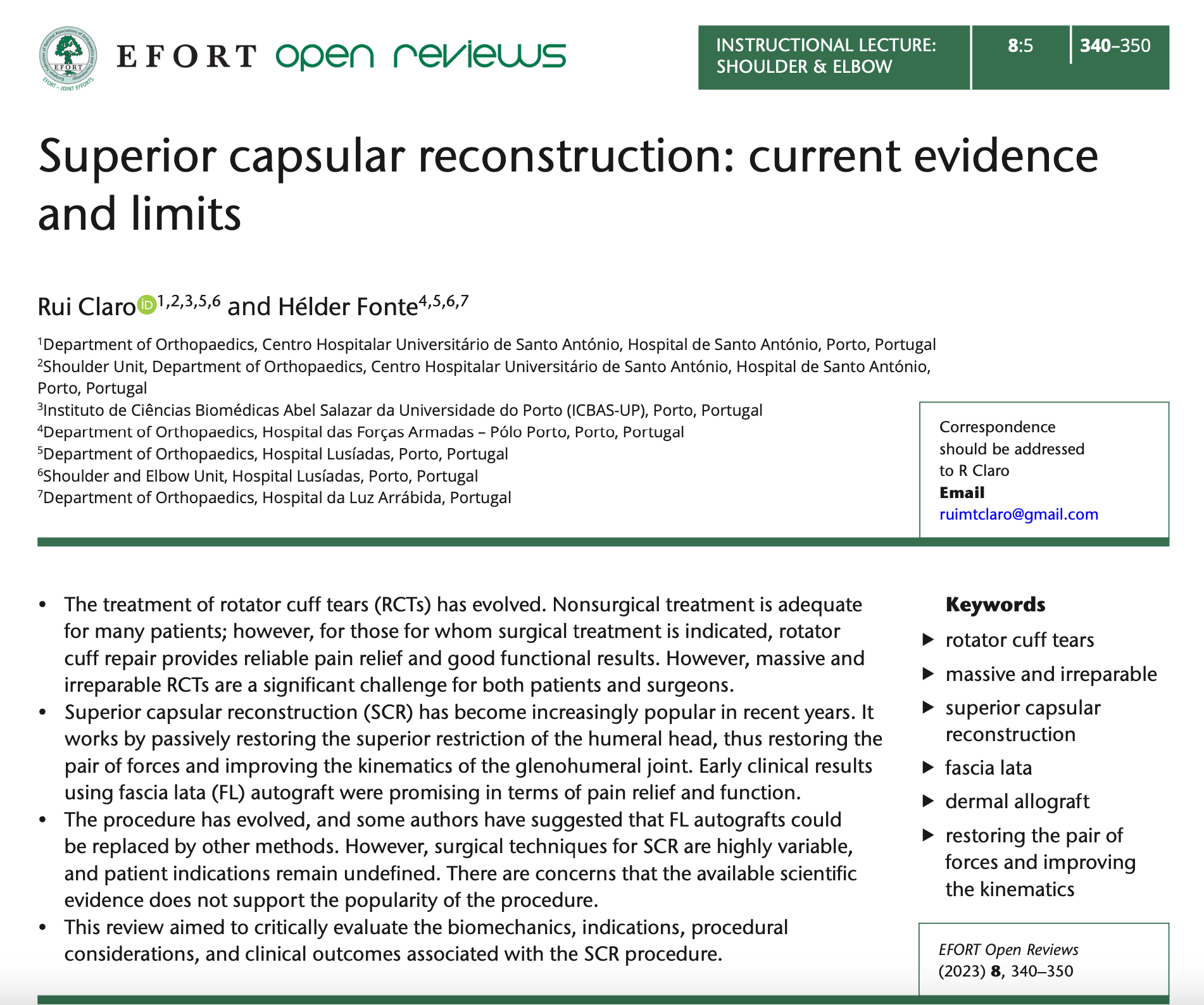Abstract
The treatment of rotator cuff tears (RCTs) has evolved.
Nonsurgical treatment is adequate for many patients; however, for those
for whom surgical treatment is indicated, rotator cuff repair provides
reliable pain relief and good functional results. However, massive and
irreparable RCTs are a significant challenge for both patients and
surgeons. Superior capsular reconstruction (SCR) has become increasingly
popular in recent years. It works by passively restoring the superior
restriction of the humeral head, thus restoring the pair of forces and
improving the kinematics of the glenohumeral joint. Early clinical
results using fascia lata (FL) autograft were promising in terms of pain
relief and function. The procedure has evolved, and some authors have
suggested that FL autografts could be replaced by other methods.
However, surgical techniques for SCR are highly variable, and patient
indications remain undefined. There are concerns that the available
scientific evidence does not support the popularity of the procedure.
This review aimed to critically evaluate the biomechanics, indications,
procedural considerations, and clinical outcomes associated with the SCR
procedure.
Claro R, Fonte H. Superior capsular reconstruction: current evidence and limits. EFORT Open Rev. 2023 May 9;8(5):340-350. doi: 10.1530/EOR-23-0027. PMID: 37158430; PMCID: PMC10233801.


